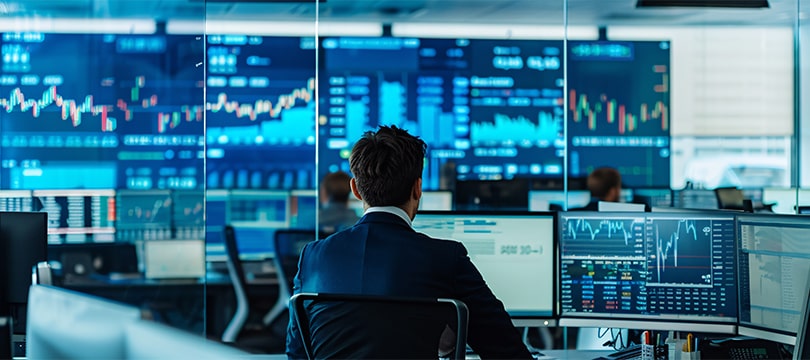Futures and
CFDs (contracts for difference) are two highly popular financial instruments among traders. Understanding the differences between these two instruments is crucial for choosing the most suitable trading strategy. In this article, we will explore the main characteristics of futures and CFDs, providing practical examples to help you better understand how they work.
What is a Future?
A
future is a standardized contract that obligates parties to buy or sell an underlying asset at a predetermined price on a future date. Futures are traded on regulated exchanges such as the Chicago Mercantile Exchange (CME) or the Intercontinental Exchange (ICE).
Practical Example of Trading with Futures
Imagine a trader buys an oil future with a three-month expiration and a price of $50 per barrel. If, at expiration, the oil price has risen to $55, the trader will realize a profit of $5 per barrel. However, if the price drops to $45, the trader will suffer a loss of $5 per barrel.
Futures can also be used for hedging. For example, an airline company might purchase oil futures to protect itself from fluctuations in fuel prices.
Advantages and Disadvantages of Futures
Advantages:
- High liquidity, making it easy to enter and exit positions.
- Price transparency due to trading on regulated exchanges.
- Rigorous regulation that offers greater security to investors.
Disadvantages:
- High margin risk, which can lead to significant losses.
- Need to manage expiration dates, with the possibility of costly rollovers.
- Complex for beginner traders due to standardized contract sizes.
- What is a CFD?
A
CFD is a contract between a trader and a Broker where the difference in the price of an asset between the opening and closing of the contract is exchanged. CFDs allow trading on various assets, such as stocks, indices, commodities, and cryptocurrencies, without physically owning them.
Practical Example of Trading with CFDs
Suppose a trader opens a CFD on gold when the price is $1,800 per ounce. If the price rises to $1,850, the trader earns the difference of $50 per ounce, net of any commissions. However, if the price falls to $1,750, the trader incurs a loss of $50 per ounce.
CFDs can also be used for short selling. For example, if a trader believes a stock's price is about to fall, they can open a short position on a CFD and profit from the price decrease.
Advantages and Disadvantages of CFDs
Advantages:
- Access to a wide range of markets with a small initial capital.
- Ability to use leverage to increase potential gains.
- Flexibility in trading operations, including the possibility of short selling.
Disadvantages:
- Overnight financing costs, which can accumulate over time.
- Counterparty risk, as CFDs are contracts with the broker.
- Less transparency compared to futures, as they are not traded on official exchanges.
Key Differences between Futures and CFDs
Contract Structure
Futures are standardized contracts traded on regulated exchanges, while CFDs are contracts between the trader and the broker, not traded on official exchanges. This makes futures safer but less flexible than CFDs.
Leverage and Margin
CFDs generally offer higher leverage compared to futures, but with higher risks of significant losses. For example, a CFD may offer leverage from 1:30 up to 1:500, while a future might offer leverage of 1:10. This means that with CFDs, it is possible to control a larger position with less capital, but the risk of loss is proportionally higher.
Liquidity and Market Size
Futures tend to have higher liquidity and trading volumes compared to CFDs, making them more suitable for large-scale operations. For example, the oil futures market is one of the most liquid in the world, with millions of contracts traded daily.
Costs and Commissions
Futures have lower trading commissions compared to CFDs but require higher margins. CFDs may have overnight financing costs that can accumulate over time. For example, maintaining a CFD position for an extended period can be costly due to margin interest.
Regulation and Security
Futures are strictly regulated, offering greater security to investors. For example, the Commodity Futures Trading Commission (CFTC) in the United States rigorously regulates the futures market. CFDs, on the other hand, are subject to broker regulation, which can vary significantly from country to country.
When to Use Futures and When to Use CFDs?
Ideal Situations for Using Futures
- When planning to maintain a position for an extended period, avoiding overnight financing costs.
- When desiring a highly regulated and transparent market, such as the commodities futures market.
- When requiring high liquidity for large-scale operations, as in institutional trading.
- When wanting to hedge against unfavorable price movements, as in the case of companies using futures to protect against commodity price fluctuations.
Ideal Situations for Using CFDs
- When wanting to trade on various assets with small initial capital, leveraging financial leverage.
- When desiring to use leverage to increase potential gains while accepting the risk of high losses.
- When preferring greater flexibility in trading operations, including the possibility of short selling.
- When wanting to speculate on short-term price movements without worrying about contract expirations, as in futures.
- When desiring access to international markets that may not be easily accessible through futures, such as cryptocurrencies or emerging markets.
Conclusion
In summary, futures and CFDs offer different advantages and disadvantages that can influence the choice of the most suitable instrument for one's trading needs. While futures are ideal for those seeking transparency, liquidity, and rigorous regulation, CFDs offer flexibility, high leverage, and access to a wide range of markets. Understanding these differences is crucial for optimizing one's trading strategy and achieving financial goals.
Before starting to trade, it is advisable to conduct thorough research and, if necessary, consult a financial advisor to fully understand the risks associated with each instrument. Regardless of your choice, remember that risk management is an essential part of successful trading.




